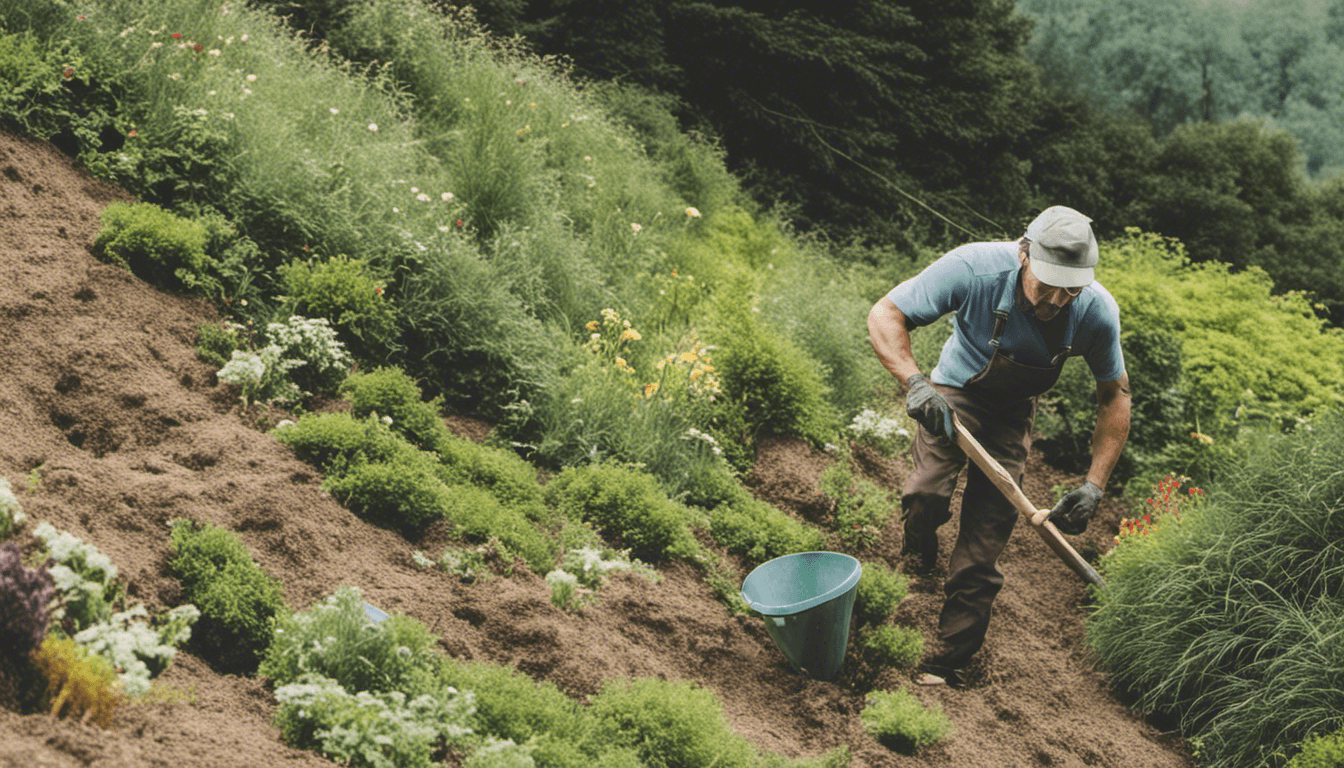
Innovative Hillside Planting: Integrating AI and Landscape Design for Erosion Control and Aesthetic Appeal
Published by Oliver on Oct 31, 2023
Hillside planting presents unique challenges and opportunities for both homeowners and landscape design professionals. With the advancement of technology, particularly the integration of Artificial Intelligence (AI) into the landscaping industry, transforming a sloped terrain into a thriving garden has never been more accessible and effective. In this blog post, we'll explore the best practices for hillside planting, utilizing AI for optimized landscape design, and providing tips to make your landscaping project a sustainable success.
Understanding the Terrain: The Key to Successful Hillside Planting
Before diving into planting, it's crucial to understand the topography and soil conditions of your hillside. Slopes can be prone to erosion, which not only affects the stability of the soil but can also impact local waterways. Incorporating ground-cover plants and deep-rooted species is a common landscaping strategy to mitigate erosion while enhancing the beauty of the hillside.
The Role of AI in Landscape Design
Landscape design has traditionally relied on the intuition and experience of designers. However, with AI, it's possible to analyze complex data sets regarding soil quality, sun exposure, moisture levels, and plant species performance. AI-powered landscaping software like Neighborbrite can help in creating a hillside planting plan that is not only aesthetically pleasing but also environmentally sustainable.
Choosing the Right Plants for Your Hillside
Selecting the right plants for hillside landscaping involves considering factors such as root structure, plant hardiness, and how well they can secure the soil. Native plants are often recommended for their adaptability and lower maintenance needs. AI can aid in the selection process by suggesting native species that will thrive on your particular slope, taking into account climate, soil pH, and the local ecosystem.
Step-by-Step Guide to Planting on a Hillside
Soil Preparation: Begin with terracing or creating swales to reduce runoff and increase water absorption. AI can help model water flow patterns to optimize the design of these features.
Plant Layout: Utilize AI landscape design tools to simulate various planting layouts. This can maximize both the stabilizing effect of the plants and their aesthetic contribution to the hillside.
Plant Selection: Choose a mix of deep-rooted trees, shrubs, and ground covers. Use AI recommendations to select species that complement each other and the surrounding landscape.
Planting Technique: Start at the base of the hill and work upward. Plant in staggered rows to maximize coverage and reduce soil exposure.
Maintenance: Establish a regular maintenance schedule. AI can assist in monitoring plant health and scheduling watering and fertilization based on real-time weather data and plant needs.
Integrating Smart Technology for Long-Term Maintenance
Smart landscaping doesn't stop at the planning phase. Utilizing AI and IoT devices for ongoing maintenance can ensure the health and growth of your hillside plants. Sensors can monitor soil moisture and trigger irrigation systems to water efficiently, which is particularly beneficial on slopes where water distribution can be uneven.
Combating Erosion with Ground Covers and Retaining Walls
Ground covers are an essential element of hillside planting. They provide a lush look while protecting the soil from direct rain impact. For steeper slopes, combining plantings with retaining walls can offer additional support. AI can analyze structural stress and soil movement to guide the placement and design of retaining walls, ensuring they complement the planting design.
Final Thoughts
Hillside planting, enhanced by AI and thoughtful landscape design, can transform challenging terrain into a functional and captivating garden space. By leveraging technology and ecological principles, homeowners can create landscapes that are not only beautiful but also contribute positively to the local environment and its biodiversity.
In the age of technology, blending traditional landscaping techniques with cutting-edge AI applications can lead to innovative solutions for hillside planting that are efficient, sustainable, and visually stunning. Whether you're a DIY gardener or a professional landscape designer, the smart integration of AI into your planting project can help achieve a successful, long-lasting hillside garden.


